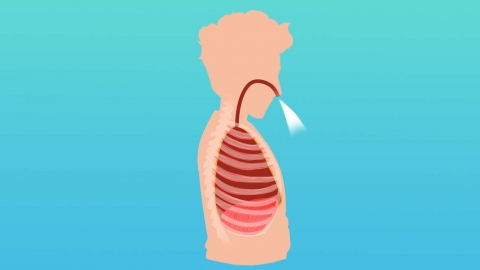How to Improve Lung Function Through Breathing
Improving lung function through breathing exercises can be achieved by various methods such as diaphragmatic breathing, pursed-lip breathing, full-body breathing exercises, balloon-blowing training, and respiratory resistance training. If you have any concerns, it is recommended to seek medical advice in advance. Detailed explanations are as follows:

1. Diaphragmatic Breathing: Diaphragmatic breathing is a form of deep breathing that enhances ventilation by fully engaging the diaphragm's movement. To practice, relax your body and sit comfortably or lie on your back. Place one hand on your abdomen and the other on your chest. Inhale slowly through your nose, allowing your abdomen to rise and feeling it expand; then exhale slowly through your mouth while contracting your abdomen. Repeat this process, aiming to keep each breath as even, slow, and deep as possible.
2. Pursed-Lip Breathing: Pursed-lip breathing helps control breathing rhythm, prolongs exhalation time, reduces respiratory rate, increases airway pressure, and prevents premature airway collapse. During practice, inhale through your nose, then purse your lips as if whistling and exhale slowly, making the exhalation last about twice as long as inhalation. This method improves gas distribution within the lungs, reduces residual volume, and alleviates symptoms of breathlessness.
3. Full-Body Breathing Exercises: Full-body breathing exercises combine limb movements with breathing training, strengthening respiratory muscles and improving physical coordination and endurance. These exercises offer various movements, allowing you to choose suitable ones based on personal preference and physical condition.
4. Balloon-Blowing Training: Balloon-blowing training is a simple and effective breathing exercise that strengthens expiratory muscles. Prepare a balloon, inhale deeply through your nose, then place your mouth around the balloon's opening and slowly blow air into it, trying to inflate it as much as possible. The duration of each balloon-blowing session can gradually increase based on your capacity. This method enhances expiratory flow and pressure, helping to expel residual air from the lungs and improve lung function.
5. Respiratory Resistance Training: Respiratory resistance training strengthens respiratory muscles by increasing resistance during breathing. Training can be performed using respiratory devices such as three-ball respiratory trainers or spring-loaded respiratory trainers. Connect the trainer to your mouth and nose, and follow the device's instructions for inhalation and exhalation exercises. By adjusting the resistance level of the trainer, the workload on the respiratory muscles can be gradually increased, enhancing their strength and endurance.
In addition to the above methods, maintaining healthy lifestyle habits can also help improve lung function. Quitting smoking, limiting alcohol consumption, avoiding inhalation of harmful gases and dust, and ensuring adequate sleep all contribute to maintaining lung health.





